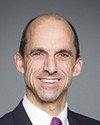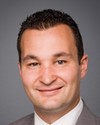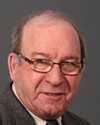I talk about my parents quite a bit. This is very specific: my father taught me how to fish one day, and he showed me how to cast the line. I kept doing that, and he went and stood over there, where he knew he would catch fish. I was getting quite bored. I was getting impatient, and I thought, “I'm not enjoying this”, but I kept doing it anyway. Then all of a sudden I felt a tug and I panicked, and I started trying to reel the fish in quickly. A voice from over there said, “[Witness speaks in her native language], Mary; let it go every once in a while. [Witness speaks in her native language]; it will get tired after a while and you will know when to bring it in.”
I cried out for my father to come and help me. He never ran down from that hill. He showed me guidance from where he stood. He taught me about patience. He taught me about perseverance. He honoured me, because he believed I could do it. So when you ask me to remember, I remember that afternoon as if it just happened.
When I worked at the University of Winnipeg, when I first got there, somebody gave me six months. They said, “She'll only last six months.” That attitude was so prevalent in the seventies and the eighties, because people believed we couldn't hold on to a job.
I started looking for allies. I started at the U of W in 1984. I knew there were people in the university who didn't believe in what I was trying to do, which was to welcome aboriginal students and make them believe they belonged in university.
Many times I walked out of that university and I questioned, “What the hell am I doing here?” So I started looking at my education. I'd finished my BA, and I thought, “If I'm going to encourage aboriginal students to go to university, I better go and get some more education.” So I started taking native studies at the University of Manitoba, because I didn't know anything else. That's what we do sometimes when we are not informed, when we don't know what career we want. It was by accident that I was able to do my post-baccalaureate certificate in education.
One day I wanted a new chair for my office, because I had hand-me-downs all these years. The person who purchased the chairs said, “Mary, you know, if you had a PhD, you could get a new chair.” I thought, “Okay, I'll try that.”
I finished my master's degree, and then I was hooked. I was hooked on schooling now.
I had to move away to Edmonton. My husband stayed in Winnipeg. Do you know how many days I ate my words there? When I counsel and advise aboriginal students since, I say, “Study. This is how long you should study. You should read, do your homework.”
It's difficult. It's difficult when you miss your family and your children because you can't afford to bring them with you. There were days when I could have quit my PhD and my master's. But I have a responsibility to my nieces and nephews. I have a responsibility to my community. I have to give something back, and that's the way I did it.
When I got back to the University of Winnipeg after my leave, the office I had was shared by the student adviser and the transition year coordinator. There was another office off the student lounge, and the liaison officer was there. And there was a little space that was going to be my office. The room had pipes. They weren't covered. There were holes in the wall. One day this elder, a good friend of mine, came in to visit me. He sat down and he burst out laughing and he said, “This is the kind of office they give you for a PhD?” There are times when you have to laugh. Otherwise, if I didn't see the sense of humour in those situations, man, I'd be dead. And I didn't want to give up.
So [Witness speaks in native language], I honour all of you today for inviting me and for recognizing my achievements, because sometimes I still don't believe I did it. Gitchi-Meegwetch.







